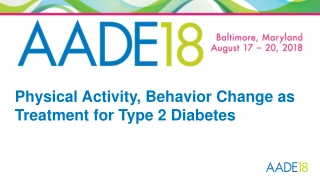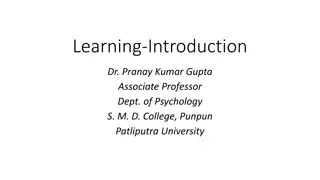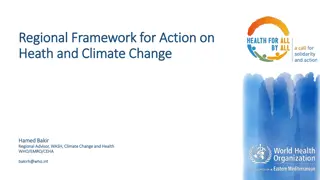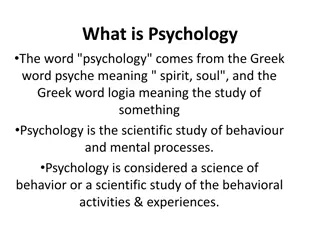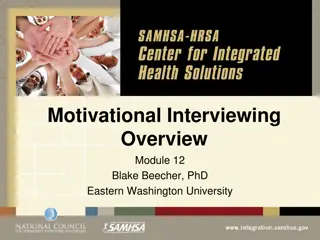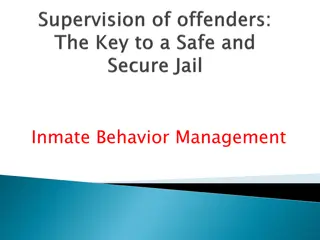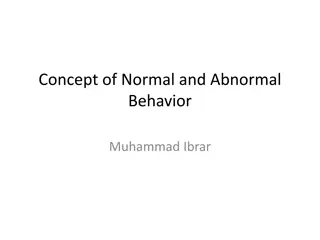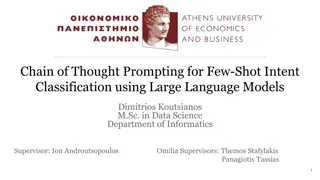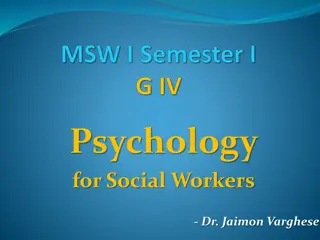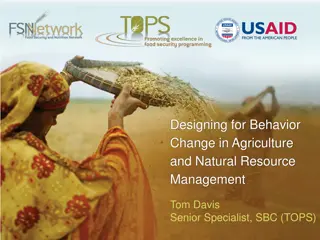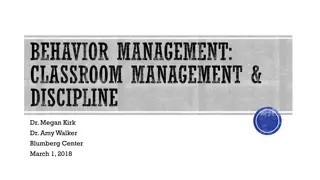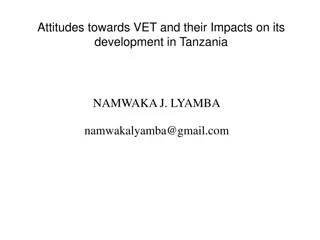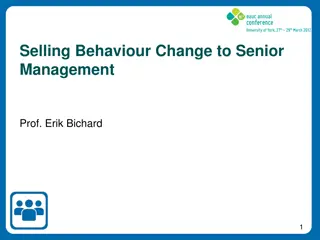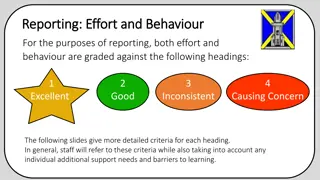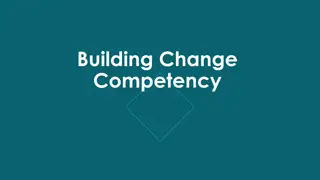Prompting Towards Health Behavior Change
Effectiveness of prompting away-towards distinction in health behavior change interventions, focusing on current trends and research questions. Dive into the Matrix approach for self-monitoring and feedback, along with insights from pilot studies.
Download Presentation

Please find below an Image/Link to download the presentation.
The content on the website is provided AS IS for your information and personal use only. It may not be sold, licensed, or shared on other websites without obtaining consent from the author.If you encounter any issues during the download, it is possible that the publisher has removed the file from their server.
You are allowed to download the files provided on this website for personal or commercial use, subject to the condition that they are used lawfully. All files are the property of their respective owners.
The content on the website is provided AS IS for your information and personal use only. It may not be sold, licensed, or shared on other websites without obtaining consent from the author.
E N D
Presentation Transcript
Need CE credit for this session? Please don t forget to scan in to have your attendance tracked.
Prompting away- towards distinction in health behavior change. BEN PIERCE, M.S., MICHAEL E. LEVIN, PH. D., & BENJAMIN SCHOENDORFF, M.A., M.SC.
Overview The Matrix and Health Behavior Study Design Findings Recommendations
Current Health Behavior Change Interventions RCTs of individual, school-based, and community interventions show moderate effects(Heath et al., 2012) However Small effect sizes for self-help and web-based interventions (Webb et al., 2010) Sustained intervention effects unclear (Butryn et al., 2011) Need for simple, widely accessible approaches (Klesges et al., 2004). Many interventions entail extensive self-monitoring. Difficult to implement with fidelity. Maybe the Matrix can help with this.
Primary Research Question Is it possible to change health behavior by simply prompting the away-towards distinction?
Trends in Effective Interventions (Michie et al., 2009) Intention setting and goal clarification. Self-Monitoring. Continuous feedback. Specific/behavioral feedback.
Trends ACT (Lillis & Kendra, 2014) Acceptance of internal barriers. Behavior as outcome. Encourages goal setting, but does not supply goals (e.g. weight loss) Focus on internal motivation Commitment.
The Matrix Contextual sorting exercise. Behavioral Focus Self-monitoring Away/Towards Internal barriers Values Feedback
The Matrix App Provide in-the-moment feedback on away-towards. Practice sorting in real-time. EMI 2 questions: Are you moving away or towards? If moving towards, how difficult was it to get started?
Pilot Study Procedures Pretest and Random Assignment Orientation to the Matrix: Define goals Walk-through Download & Use app for 2 weeks EMI plus self-checkin Coaching call @ week 1 Follow-up @ week 2
Pilot Study 24 participants [13 Matrix, 11 Control] 14 Women, 10 Men Mean Age 26.41 16 from community, 8 from undergraduate courses 21 identified White race, 3 did not respond 4 identified Latino/a ethnicity Median income bracket was $20,000 $40,000 Health Related Questions 6 Matrix and 8 control participants at least slightly dissatisfied with eating habits 6 Matrix and 7 control participants at least slightly dissatisfied with exercise
Pilot Study Measures: Weight Control Strategies Scale (WCSS; Pinto et al., 2013) Dietary Choices, Self-Monitoring, Physical Activity, Psychological Coping Emotional Eating (DEBQ-EE; Van Strein et al., 1986) Weight Self-Stigma (WSSQ; Lillis et al., 2010) Self-Stigma, Fear of Enacted Stigma Psychological Inflexibility Food (FAAQ; Juarascio et al., 2011) Body Image (BIAAQ; Sandoz et al., 2013) Valuing Questionnaire (VQ; Smout et al., 2014) Global Health (GHS; Hays et al., 2009) Physical Heath, Mental Health
Findings Pre-Post Mixed ANOVA Results (Type 3 SS) WCSS Physical activity F(1, 20.9) = 2.949, p = .10 WCSS Psychological coping F(1, 19.1) = 5.646, p = .03 All other measures, n.s
Findings EMI Model 1: DV = Towards (0 = Away, 1 = Towards) Level 1 Bprompt = -0.004, n.s. Level 2 Bday = 0.042, p = .048 exp(Bday) = 1.043 Level 3 Mean Threshold = -0.576, p < .001 exp(threshold) = 56.3% baseline probability
Findings EMI Model 2: DV = Difficulty (0 = easy, 1 = fairly hard, 2 = very difficult) Level 1 Bprompt = 0.012, p = .004 Level 2 Bday = -0.030, p = .029 Level 3 Mean = 0.555, p < .001
Findings What did you like? Simplicity Ease of use Ongoing feedback What did you learn? That I always have a choice in my life. I can decide exactly who and what I want to be and how and why I do that at any time. I was able to consider a lot of actions that are influencing my goals that I didn't think about before.
Findings What did you dislike? Simplicity Repetitiveness Lack of motivational content
Summary Using the matrix app Increased the probability of a towards move over time Reduced difficulty of making towards moves May have increased physical activity and psychological coping Did not affect other flexibility processes, weight self-stigma, self-rated global health. According to participants Simplicity and ongoing feedback were helpful Too much simplicity = repetitive Lacked motivational content
Implications Sorting on the away-towards dimension alone can increase towards moves. Committed action? More comprehensive / tailored approaches -> other flexibility processes Ability to add values, inner barriers, and away/towards moves to the Matrix. Other motivational content?
Next Steps A customizable Matrix app. With tailored interventions for away moves Adjunctive Matrix app. Can we support progress in therapy?
References Ciarrochi, J., Fisher, D., & Lane, L. (2011). The link between value motives, value success, and well being among people diagnosed with cancer. Psycho Oncology, 20, 1184-1192. Fairburn, C. G., & Beglin, S.J. (1994). Assessment of eating disorder psychopathology: Interview or self-report questionnaire? International Journal of Eating Disorders, 16, 363-370 Ferssizidis, P., Adams, L. M., Kashdan, T. B., Plummer, C., Mishra, A., & Ciarrochi, J. (2010). Motivation for and commitment to social values: The roles of age and gender. Motivation and Emotion, 34, 354-362. Gregg, J. A., Callaghan, G. M., Hayes, S. C., & Glenn-Lawson, J. L. (2007). Improving diabetes self-management through acceptance, mindfulness, and values: A randomized controlled trial. Journal of Consulting and Clinical Psychology, 75, 336-343. Godin, G., & Shephard, R. J. (1985). A simple method to assess exercise behavior in the community. Canadian Journal of Applied Sport Sciences, 10, 141-146. Godin, G., & Shephard, R. J. (1997). Godin leisure-time exercise questionnaire. Medicine and Science in Sports and Exercise, 29, S36-S38. Hays, R. D., Bjorner, J. B., Revicki, D. A., Spritzer, K. L., & Cella, D. (2009). Development of physical and mental health summary scores from the patient-reported outcomes measurement information system (PROMIS) global items. Quality of Life Research, 18, 873 880 Hayes, S. C., Strosahl, K. D., & Wilson, K. G. (2011). Acceptance and Commitment Therapy: The process and practice of mindful change. New York: The Guilford Press. Heron, K. E., & Smyth, J. M. (2010). Ecological momentary interventions: Incorporating mobile technology into psychosocial and health behavior treatments. British Journal of Health Psychology, 15, 1-39. Jacobs Jr, D. R., Ainsworth, B. E., Hartman, T. J., & Leon, A. S. (1993). A simultaneous evaluation of 10 commonly used physical activity questionnaires. Medicine and Science in Sports and Exercise, 25, 81-91. Juarascio, A., Forman, E., Timko, C. A., Butryn, M., & Goodwin, C. (2011). The development and validation of the food craving acceptance and action questionnaire (FAAQ). Eating behaviors, 12, 182-187. Lillis, J., Hayes, S. C., Bunting, K., & Masuda, A. (2009). Teaching acceptance and mindfulness to improve the lives of the obese: A preliminary test of a theoretical model. Annals of Behavioral Medicine, 37, 58-69. Lillis, J. & Kendra, D.E. (2014). Acceptance and commitment therapy for weight control: Model, evidence and future directions. Journal of Contextual Behavioral Science, 3, 1-7. Lillis, J., Luoma, J., Levin, M.E. & Hayes, S.C. (2010). Measuring Weight Self Stigma: The Weight Self Stigma Questionnaire. Obesity, 18, 971-976. Lugt, A. A. V. (2014) The pain matrix. In K. L. Polk & B. Schoendorff (Eds.), The ACT Matrix: A new approach to building psychological flexibility across settings and populations, (pp. 93-108). Oakland, CA: New Harbinger Publications. Newman, D. A. (2003). Longitudinal modeling with randomly and systematically missing data: A simulation of ad hoc, maximum likelihood, and multiple imputation techniques. Organizational Research Methods, 6, 328-362. Niemeier, H. M., Leahey, T., Reed, K. P., Brown, R. A., & Wing, R. R. (2012). An acceptance-based behavioral intervention for weight loss: A pilot study. Behavior Therapy, 43, 427-435. Pinto, A.M., Fava, J.L., Raynor, H.A., LaRose, J.G. & Wing, R.R. (2013). Development and validation of the weight control strategies scale. Obesity, 21, 2429-2436 Polk, K. L., & Schoendorff, B. (Eds.). (2014). The ACT Matrix: A new approach to building psychological flexibility across settings and populations. Oakland, CA: New Harbinger Publications. Sandoz, E. K., Wilson, K. G., Merwin, R. M., & Kellum, K. K. (2013). Assessment of body image flexibility: The body image-acceptance and action questionnaire.Journal of Contextual Behavioral Science, 2, 39-48. Schoendorff, B., & Bolduc, M. F. (2014). You, me, and the matrix: A guide to relationship- oriented ACT. In K. L. Polk & B. Schoendorff (Eds.), The ACT Matrix: A new approach to building psychological flexibility across settings and populations, (pp. 57-76). Oakland, CA: New Harbinger Publications. Shiffman, S., Stone, A. A., & Hufford, M. R. (2008).Ecological momentary assessment. Annual Reviews of Clinical Psychology, 4, 1-32.
Need credit for this session? Please don t forget to scan out. What did you think?.... complete the 3 question quickeval for this session at https://contextualscience.org/quickeval This was presentation was session #97
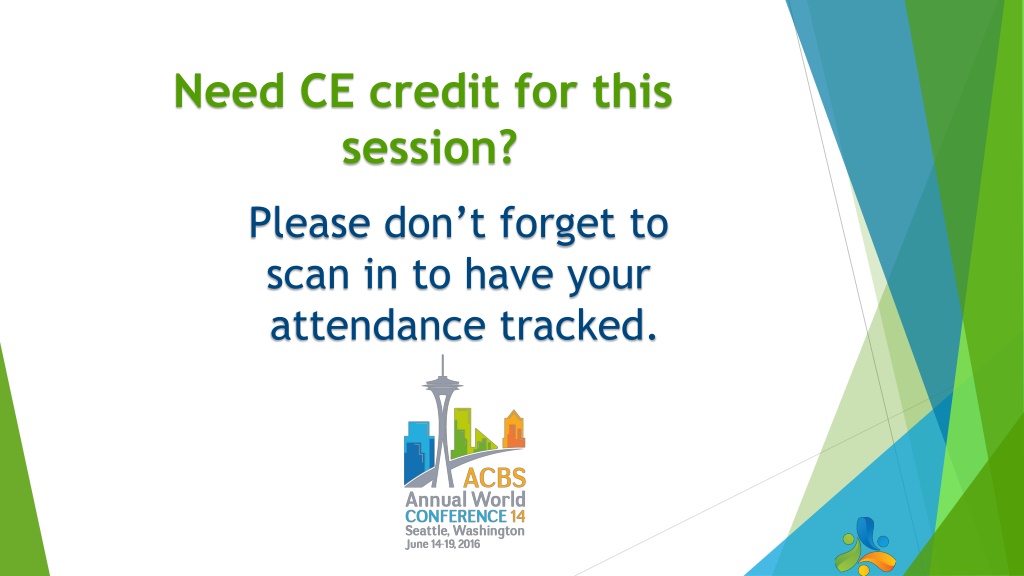




 undefined
undefined




